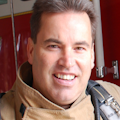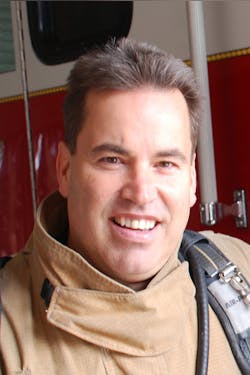Fire Prevention: We Can’t Save Everyone, Every Time
Hurricane Katrina was a major turning point for American emergency preparedness and response. Two major revelations occurred: First, that the U.S. government should not be in the 9-1-1 business and, second, that citizens relying primarily on government services to be their first and only line of protection is not only ill-advised but also not good for national security and resiliency. The fire service—as a provider of emergency services paid for (mostly) through government taxation—is in fact a government-provided service.
Changing the narrative
In 2011, in no small part due to the lessons learned from Hurricane Katrina, the government rolled out the National Preparedness Goal (NPG). The NPG again places emphasis for disaster preparedness at the local community level where fire departments should be at the core. This philosophy keeps disasters as local as possible, all the way down to the individual citizen’s ability to prevent, protect, mitigate, respond and recover from a disaster. This same approach was proven successful under former FEMA Director James Lee Witt’s Project Impact program in 1997, when he transformed the underperforming organization into what many described as FEMA’s golden years. In other words, the national narrative has changed from encouraging reliance upon government services in providing protection to one where it’s the individual citizen who needs to take that first level of ownership and responsibility for their protection.
This change in narrative is in sharp contrast to our national history. Starting in 1803, when the federal government first assumed a role in disaster response after the devastating fire in Portsmouth, NH, society has increasingly turned to, and depended upon, government services and assistance in disaster. From large natural disasters like hurricanes to the local neighborhood house fire, citizens largely count on the government to protect, respond and help them recover. Changing this narrative and placing responsibility back on the citizen is not only a drastic cultural shift, but as those of us in the emergency services know (and as disasters continue to show us), it is a logical one and where the biggest difference can be made.
As firefighters, we continuously respond to disasters at all levels of severity—disasters that could have easily been prevented, limited and survived if a solid sense of knowledge and training in prevention, protection, mitigation and response had been in place prior to any government intervention. This is where the fire department is in the best position to take on an increasing role in providing a daily value of efficient and effective community protection.
Providing the education and training our citizens need to assume their roles and responsibilities for their own safety and that of their community, and changing that narrative, is where the biggest differences for all can be made. A simple smoke detector and fire extinguisher can be the difference between damage to a new stove and a couple of cabinets or destruction of a home or even a city block, to say nothing of the risk of injury and death for the citizens and for us. Placing such responsibility on individual citizens, along with the accompanying education and training, assures that everyone, citizen and firefighter alike, goes home and has a home to go to.
When our citizens prevent, protect, mitigate and respond properly, not only do they benefit by a quicker recovery, but so do their neighbors and firefighters who are exposed to less risk. Thus, the entire community benefits. This is the very definition and goal of the NPG and community resiliency, and where the fire service is in the best position to take the lead and have the biggest impact for community and national security. Simply continuing to reside in the response-only aspect limits our role and our community value, and is in contrast to our proclaimed purpose of protecting our communities.
In changing this narrative, I suggest that the fire service take note of law enforcement’s approach to today’s threats. Brevard County, FL, Sheriff Wayne Ivey, who describes himself as “one of the most politically incorrect sheriffs in the country,” produced a Facebook video calling for his citizens to “arm themselves,” and when the fight comes to them, to be prepared to wage war to protect themselves and their family. The sheriff stated plainly, and factually, that calling 9-1-1 only means that his limited number of deputies are on their way, but “until they arrive, it’s up to you and those with you to neutralize or eliminate the threat.”
Could this be the same for the fire service? We have science and facts on our side. Studies by NIOSH show that today’s fires go from the incipient to the flashover stage in just 3–5 minutes. The NFPA standard for fire department response is 4 minutes, but most department logs show that oftentimes that benchmark is not met, either due to station location, traffic congestion or because the nearest fire company is blocks away, tied up on the scene of another emergency. Adding to this, approximately 70 percent of our national fire departments are volunteer and therefore not staffed 24/7, and even when fire departments provide that 24/7 coverage, they are understaffed according to NFPA 1710 and 1720. When you attach the time it takes to stretch that first line and advance into the building, we are well passed the average flashover and survivability times.
It’s time to start being honest about the nature and danger of modern fires and change our narrative to a more factual one based on science and statistics—that the best fire protection starts with the individual citizen and their ability to neutralize or eliminate the threat, because to rely solely on their fire department to arrive in time to save them is ill-advised for their own well-being and that of their community. To not change this narrative is being counterproductive to the point that our citizens have no concern of fire in their home or their own mortality, nor how their personal behavior and preparedness impacts the safety of their family. While firefighters are still making heroic and dramatic rescues, the fact is that those rescues are not the norm, and they are heroic and dramatic because it was an “in the nick of time” save. It was simply where skill and passion were able to beat the clock, not because that is the service fire departments are able to routinely provide or one that our citizens should count on.
This narrative change also allows fire departments to elevate their prevention divisions and services beyond an extra nicety, but as an equal in order to adequately and efficiently save property and lives in these modern times. Fire departments having a robust fire prevention division (or community risk reduction division) are also in accordance to the NPG and a necessity to homeland security, because fire is a disaster more likely to kill Americans and level entire communities annually than any terrorist or natural disaster. Just as important, it is a valued service that can be provided daily to the taxpayer who is increasingly demanding justification and accountability for their hard-earned dollars. It provides a solid answer to an increasing question in today’s changing society, “What have you done for me lately?”
We joined the fire service because we care about our communities and want to dedicate our lives to their protection and betterment. Just like parents applying tough love to their children for their wellbeing, we too must start applying that same tough love through scientific truths about the nature of our reality: Today’s fires grow faster than our ability to get there on time, and citizens need to take more responsibility for their own safety. But here is the caveat: In being successful at this narrative change, we can also grow our department and services to better achieve the very goal of why we started this journey—to save lives.
This narrative change is not about defeat or reducing the heroic image of the American firefighter; it is about our willingness to be honest and brave enough to admit that we can’t save everyone, every time. We already know this and science supports it. To keep this fact hidden is a disservice. But admitting it, and providing solutions, demonstrates our commitment and dedication to our profession and communities. Today’s fire threat has changed, and we must be willing to change as well to defeat it and save a life.
In sum
Now it’s time for a little Sheriff Ivey honesty: “Ladies and gentleman, should a fire occur at your home, be prepared to save yourself and your family, because when you call 9-1-1, we are on our way, but you can’t count on us to be there in time. Until we arrive, it’s up to you and those with you to neutralize or eliminate the threat by having smoke detectors, fire extinguishers, sprinkler systems and a family escape plan in order to survive.”
This type of honesty is truly the best policy because it is a life insurance policy for us, our citizens and our nation, and we also have the benefit of adding to that statement, “No need to worry, because your fire department can help you address these issues and help your family protect itself and survive.”
About the Author

Daniel Byrne
DANIEL BYRNE is a community support officer for the Burton Fire District, Beaufort County, SC, and a retired assistant fire chief of training for the Georgia Air National Guard 165th Fire Department. A third-generation firefighter, he holds an associate degree and a bachelor’s degree in fire science as well as a master’s degree in public administration and disaster management. Byrne is an alumnus of the National Fire Academy. He received state and local awards for public relations and educational programs as well as community partnerships and served as a conference presenter and keynote speaker.
